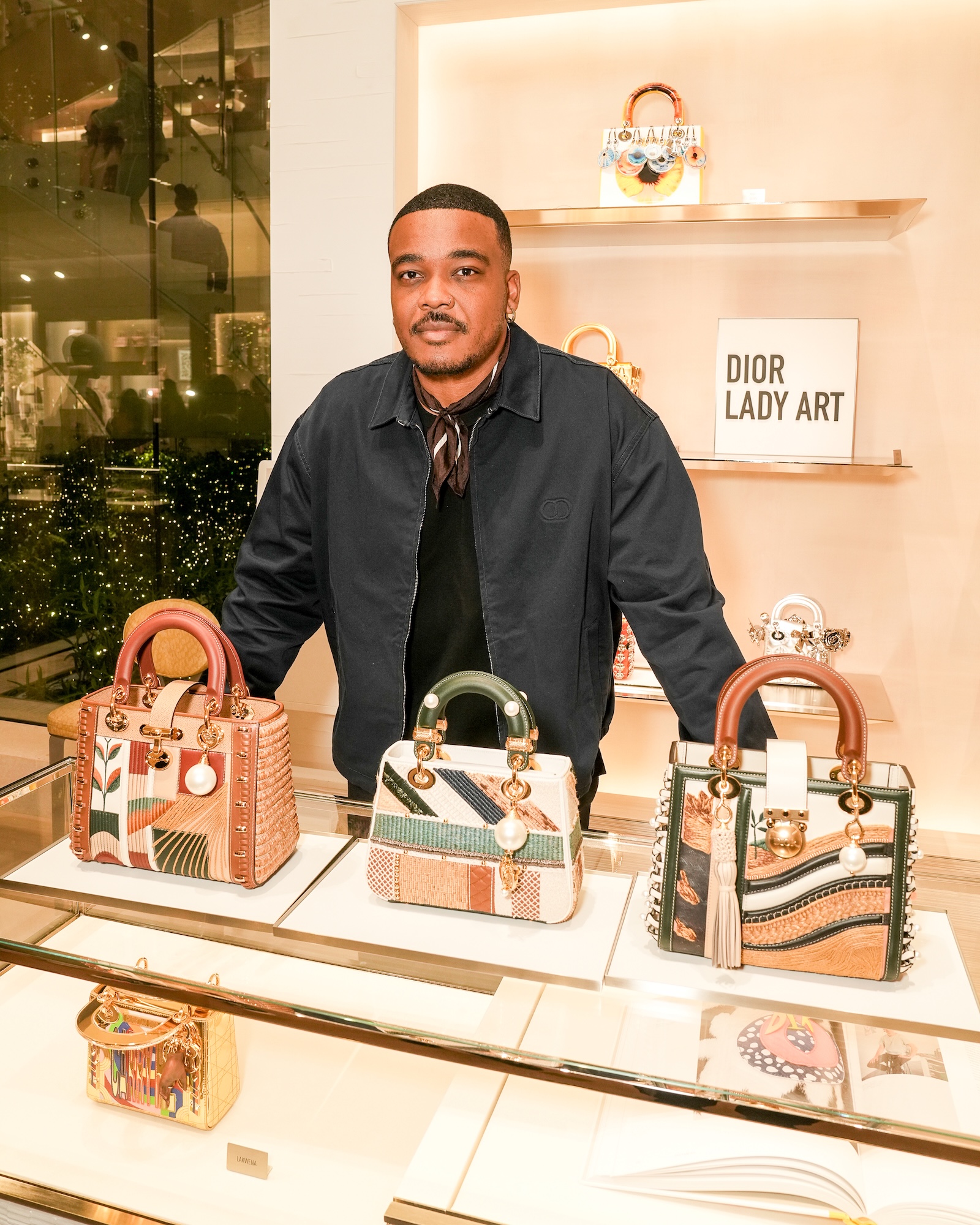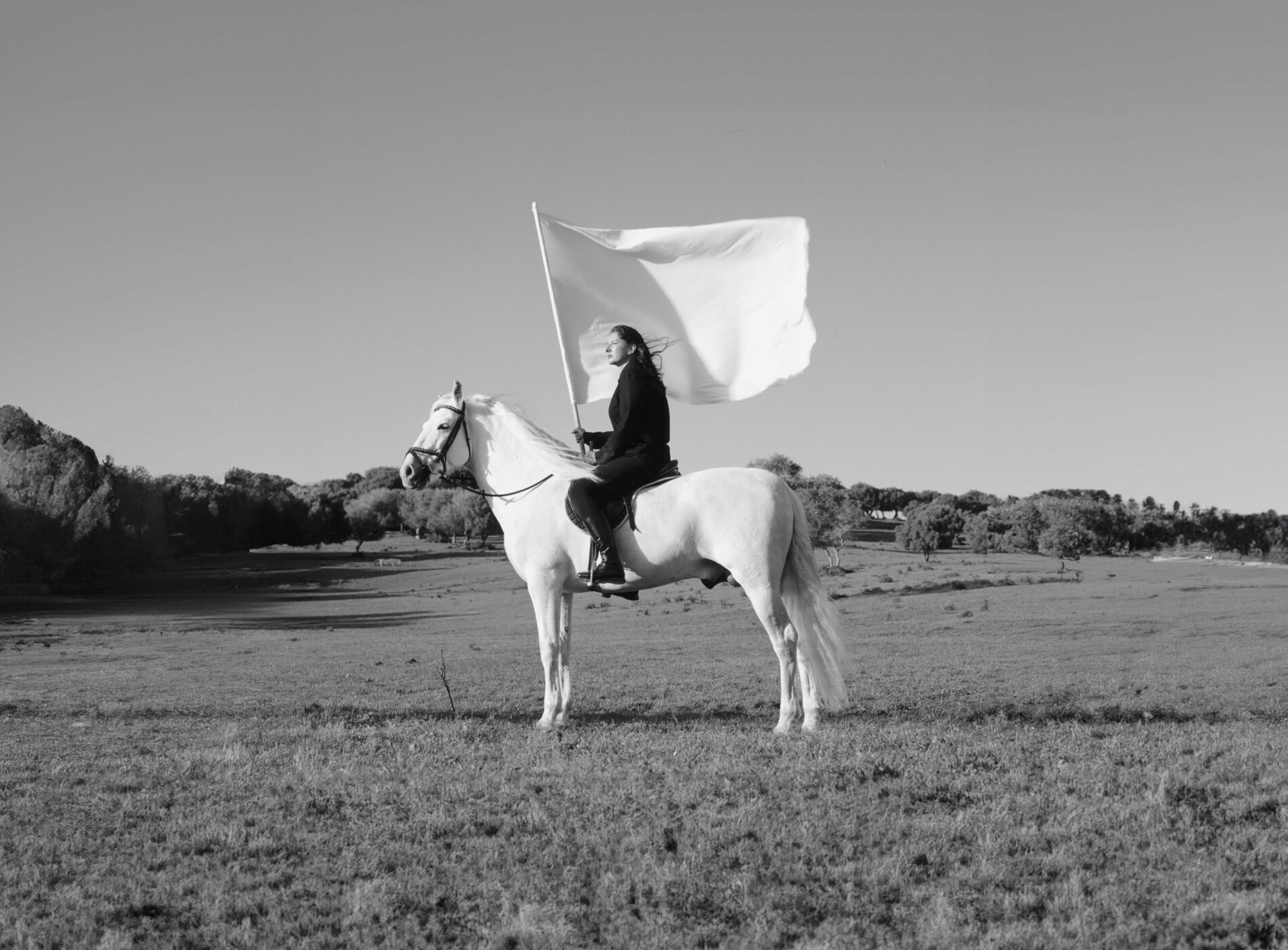

The Douglas Brothers, Andrew Douglas (left) Stuart (right)
* * *
The Douglas Brothers are a photography duo whose unusual nomenclature is synonymous with some of the most iconic underground portraiture of the early '90s, capturing many of the most influential cultural figures of the modern era in the death-mask-like eye of their somewhat gothic lens. Although they originally hail from the distinctly unglamorous _Trainspotting_\-esque suburban hinterlands of Southend in the United Kingdom, Andrew and Stuart Douglas share an aesthetic similarity with another pair of infamous siblings, The Brothers Quay, whose surrealist animation ploughs a not dissimilar dreamlike landscape of identity–glimpsed only in the dark, faded corners of distant shadowlands.
The Douglas Brothers have a somewhat more chequered history, however, which is thoroughly in-keeping with their _This Is England_ working-class roots. Some 20 years ago, they fell out Oasis-style and stopped talking entirely, and, subsequently, mislaid a vast number of images that disappeared into that well-documented vacuum-like sinkhole of unpaid storage. These images were, somewhat miraculously, unearthed, in a refuse container in London’s King’s Cross area, some two years ago, and no less than 14 of them have since made their way into the permanent collection at London’s iconic National Portrait Gallery.
The chance excavation of this testament to their lost talent brought the two estranged siblings-–who had both since carved enviable careers in commercial advertising–-back together, healing wounds that were long left raw. This reconciliation led to an exhibition of both portraiture and more abstract excursions that now comes to Los Angeles on January 13, at the Kopeikin Gallery. Here, the brothers tell us how they initially came to carve such a unique niche in the photographic medium, and why it sometimes takes the consensus of the public, to define oneself as an artist.
* * *


**How did The Douglas Brothers partnership actually begin, because you are ten years apart as brothers.**
**Andrew**: I studied photography in London, and when I came out of assisting, I found myself photographing a lot of music stuff. Stuart was still at school back home in Southend, and because it was all music that he liked too--stuff like The Jam--I would get him up to London as a kind of assistant. After a while, it just seemed to make lots of sense that we would work together.
**Stuart:** We were never too sure of how it was going to work. There were no partner duos at that time, except for the Starn Twins, who were much more fine art.
**Andrew:** I think, because of that, we got a lot of mileage just from the name, The Douglas Brothers, because it was so weird. I can remember that everybody wanted us to be identical twins. Actually, come to think of it, there were a couple of brother duos--The Kray Brothers being the most famous _\[laughs\]_.
**What influenced you to seek out the very unique niche you carved in photography?**
**Andrew**: I think we were mostly influenced by a desire to do something very different to the kind of photography we were looking at, because a lot of the portraiture out there was kind of the Annie Leibowitz, Mark Seliger school, you know, which is quite polished. We wanted to go into a very handmade direction, so we would look up much older techniques, Victorian photographs and death masks, stuff like that. That’s why lots of the portraits look a little like dead people.
**Stuart:** When we came out, we literally couldn’t afford to shoot polished photography, so we had to find a different way, we really had to. We just had some old kit and an old studio with nothing in it, so we had to find ways of making images that we could actually afford to produce. I think that kind of led to using the older techniques and experimenting, and stumbling across stuff that eventually morphed into the style and aesthetic that we’re now known for.


**How did it feel when you hit on your style?**
**Stuart:** It was really something! Because it wasn’t like a Julia Margaret Cameron any more, and it wasn’t a portrait of George Bernard Shaw. It was something kind of gothic and strange and interesting, you know? It was both modern and old at the same time.
**Andrew**: We started to get a lot of portrait work with it, and we were still getting some illustrative work for book covers, and stuff like that, so we had kind of two threads that were moving in parallel, and were just getting work whenever we could.
**Are there any memories that stand out from that period?**
**Andrew**: Well, I’m a huge John Le Carre fan. We did some stuff with him, and he’s been my hero ever since. He's just such a fantastic storyteller, and he mixed in such interesting circles.
**Stuart:** We did a book cover for him and he kind of enjoyed it, so we ended up doing more. He invited us to go to Switzerland with him to meet and photograph a real Swiss spy, who had a Russian controller that he had been researching. He went and sat with this guy, who seemed retired, and been called a traitor and we were kind of given the task of floating around the outside, and documenting it, actually almost like spies.
**Andrew**: You kept running into him in London, didn’t you?
**Stuart:** I kept bumping into him, yeah, I think he suspected I was stalking him. \[_Laughs\]_
**Was there a shoot for you that was a eureka moment, of sorts?**
**Andrew**: The Daniel Day-Lewis shoot, around the time of _My Left Foot_. He spent most of his time kind of sitting there and laughing with us, and that allowed something else to happen. It was a really pivotal moment. That’s kind of how that intimacy in the shots grew that became kind of a trademark. There were a couple who escaped, of course. Giorgio Armani escaped, because he had 20 set poses that he would do, and we just didn’t know what to do with it. But with most people I think we managed to get under the skin. And because of the technique, everything was a one-off print that we could never actually replicate.
**Stuart:** We’ve got an astonishing archive of work, not just in terms of volume of names, but in kind of one-off prints that we did.
**How did you manage to lose the work that is now hanging in the National Portrait Gallery?**
**Stuart:** Andrew was living in the States, so I had everything, and the production company I was working at was moving, so I had to get rid of everything and put it all into storage, which Andrew was actually paying for. So, we put all this work into storage and that was it. I sent Andrew little notes that I had done that, saying there were three books in there we should do. So, in a way, here was always intention to do something, even when we weren’t talking, which was for a long period of time.
**Andrew:** It was years and years of no talking. We always knew that there was this body of work and that we needed to do something with it, but by then, we were on the hamster wheel of keeping up with the world we had created for ourselves, so we were working, working, working… and, of course, we never went back. It was such a task to dig into that, and I think it was really emotional as well.
**It must have been a difficult time between you.**
**Andrew:** I don’t know how much Stuart felt, or how much anyone has admitted to this, but we did split and it was sad and uncomfortable for the longest time. I think the stuff in the storage, for me, even though there were things in there that I liked, represented the time we were together and I just didn’t want it, I didn’t want to deal with the emotion or what it represented, so fuck, we almost let it go. I almost let it go.


**Did you have any idea the work would be seen as so significant?**
**Stuart:** I thought it was, but then I thought it might just be significant to us. When the National Portrait Gallery validated that opinion for us, it was the first time I ever thought, "This work really has a life outside of us." That was really special, amazing, actually.
**What is next for you now that you have found each other again?**
**Stuart:** We’ve got to play off that inspiration really and back into a world that’s changed: the digital world. We’re trying to think about how, after that kind of gap, how do we jump back in, and do we jump back in as if it was the next day? Do we still use the same gear, or is that just preposterous, to use the same gear in the digital age? We just don’t know. We have ideas of things we’d like to do, but we don’t quite know who we are. We can shoot commercials and short films with our eyes closed, but we don’t know who we are as photographers and it’s a funny thing, a funny moment, because we kind of know, now that we’re together, at the same place, we kind of know we want to do some photography work and is it going to be digital, is it going to be analogue? We’re kind of going through that right now, really.
* * *
Written by Paul Pryor
All images from _SEE/SAW_ from exhibition by The Douglas Brothers
_SEE/SAW a photo exhibition by The Douglas Brothers: Jan 13–Feb 17, 2018 at the Kopeiken
Gallery 2766 S. La Cienega Blvd., Culver City CA 90034 Los Angeles._
 
The Douglas Brothers, Andrew Douglas (left) Stuart (right)
* * *
The Douglas Brothers are a photography duo whose unusual nomenclature is synonymous with some of the most iconic underground portraiture of the early '90s, capturing many of the most influential cultural figures of the modern era in the death-mask-like eye of their somewhat gothic lens. Although they originally hail from the distinctly unglamorous _Trainspotting_\-esque suburban hinterlands of Southend in the United Kingdom, Andrew and Stuart Douglas share an aesthetic similarity with another pair of infamous siblings, The Brothers Quay, whose surrealist animation ploughs a not dissimilar dreamlike landscape of identity–glimpsed only in the dark, faded corners of distant shadowlands.
The Douglas Brothers have a somewhat more chequered history, however, which is thoroughly in-keeping with their _This Is England_ working-class roots. Some 20 years ago, they fell out Oasis-style and stopped talking entirely, and, subsequently, mislaid a vast number of images that disappeared into that well-documented vacuum-like sinkhole of unpaid storage. These images were, somewhat miraculously, unearthed, in a refuse container in London’s King’s Cross area, some two years ago, and no less than 14 of them have since made their way into the permanent collection at London’s iconic National Portrait Gallery.
The chance excavation of this testament to their lost talent brought the two estranged siblings-–who had both since carved enviable careers in commercial advertising–-back together, healing wounds that were long left raw. This reconciliation led to an exhibition of both portraiture and more abstract excursions that now comes to Los Angeles on January 13, at the Kopeikin Gallery. Here, the brothers tell us how they initially came to carve such a unique niche in the photographic medium, and why it sometimes takes the consensus of the public, to define oneself as an artist.
* * *

The Douglas Brothers, Andrew Douglas (left) Stuart (right)
* * *
The Douglas Brothers are a photography duo whose unusual nomenclature is synonymous with some of the most iconic underground portraiture of the early '90s, capturing many of the most influential cultural figures of the modern era in the death-mask-like eye of their somewhat gothic lens. Although they originally hail from the distinctly unglamorous _Trainspotting_\-esque suburban hinterlands of Southend in the United Kingdom, Andrew and Stuart Douglas share an aesthetic similarity with another pair of infamous siblings, The Brothers Quay, whose surrealist animation ploughs a not dissimilar dreamlike landscape of identity–glimpsed only in the dark, faded corners of distant shadowlands.
The Douglas Brothers have a somewhat more chequered history, however, which is thoroughly in-keeping with their _This Is England_ working-class roots. Some 20 years ago, they fell out Oasis-style and stopped talking entirely, and, subsequently, mislaid a vast number of images that disappeared into that well-documented vacuum-like sinkhole of unpaid storage. These images were, somewhat miraculously, unearthed, in a refuse container in London’s King’s Cross area, some two years ago, and no less than 14 of them have since made their way into the permanent collection at London’s iconic National Portrait Gallery.
The chance excavation of this testament to their lost talent brought the two estranged siblings-–who had both since carved enviable careers in commercial advertising–-back together, healing wounds that were long left raw. This reconciliation led to an exhibition of both portraiture and more abstract excursions that now comes to Los Angeles on January 13, at the Kopeikin Gallery. Here, the brothers tell us how they initially came to carve such a unique niche in the photographic medium, and why it sometimes takes the consensus of the public, to define oneself as an artist.
* * *
 
**How did The Douglas Brothers partnership actually begin, because you are ten years apart as brothers.**
**Andrew**: I studied photography in London, and when I came out of assisting, I found myself photographing a lot of music stuff. Stuart was still at school back home in Southend, and because it was all music that he liked too--stuff like The Jam--I would get him up to London as a kind of assistant. After a while, it just seemed to make lots of sense that we would work together.
**Stuart:** We were never too sure of how it was going to work. There were no partner duos at that time, except for the Starn Twins, who were much more fine art.
**Andrew:** I think, because of that, we got a lot of mileage just from the name, The Douglas Brothers, because it was so weird. I can remember that everybody wanted us to be identical twins. Actually, come to think of it, there were a couple of brother duos--The Kray Brothers being the most famous _\[laughs\]_.
**What influenced you to seek out the very unique niche you carved in photography?**
**Andrew**: I think we were mostly influenced by a desire to do something very different to the kind of photography we were looking at, because a lot of the portraiture out there was kind of the Annie Leibowitz, Mark Seliger school, you know, which is quite polished. We wanted to go into a very handmade direction, so we would look up much older techniques, Victorian photographs and death masks, stuff like that. That’s why lots of the portraits look a little like dead people.
**Stuart:** When we came out, we literally couldn’t afford to shoot polished photography, so we had to find a different way, we really had to. We just had some old kit and an old studio with nothing in it, so we had to find ways of making images that we could actually afford to produce. I think that kind of led to using the older techniques and experimenting, and stumbling across stuff that eventually morphed into the style and aesthetic that we’re now known for.

**How did The Douglas Brothers partnership actually begin, because you are ten years apart as brothers.**
**Andrew**: I studied photography in London, and when I came out of assisting, I found myself photographing a lot of music stuff. Stuart was still at school back home in Southend, and because it was all music that he liked too--stuff like The Jam--I would get him up to London as a kind of assistant. After a while, it just seemed to make lots of sense that we would work together.
**Stuart:** We were never too sure of how it was going to work. There were no partner duos at that time, except for the Starn Twins, who were much more fine art.
**Andrew:** I think, because of that, we got a lot of mileage just from the name, The Douglas Brothers, because it was so weird. I can remember that everybody wanted us to be identical twins. Actually, come to think of it, there were a couple of brother duos--The Kray Brothers being the most famous _\[laughs\]_.
**What influenced you to seek out the very unique niche you carved in photography?**
**Andrew**: I think we were mostly influenced by a desire to do something very different to the kind of photography we were looking at, because a lot of the portraiture out there was kind of the Annie Leibowitz, Mark Seliger school, you know, which is quite polished. We wanted to go into a very handmade direction, so we would look up much older techniques, Victorian photographs and death masks, stuff like that. That’s why lots of the portraits look a little like dead people.
**Stuart:** When we came out, we literally couldn’t afford to shoot polished photography, so we had to find a different way, we really had to. We just had some old kit and an old studio with nothing in it, so we had to find ways of making images that we could actually afford to produce. I think that kind of led to using the older techniques and experimenting, and stumbling across stuff that eventually morphed into the style and aesthetic that we’re now known for.
 
**How did it feel when you hit on your style?**
**Stuart:** It was really something! Because it wasn’t like a Julia Margaret Cameron any more, and it wasn’t a portrait of George Bernard Shaw. It was something kind of gothic and strange and interesting, you know? It was both modern and old at the same time.
**Andrew**: We started to get a lot of portrait work with it, and we were still getting some illustrative work for book covers, and stuff like that, so we had kind of two threads that were moving in parallel, and were just getting work whenever we could.
**Are there any memories that stand out from that period?**
**Andrew**: Well, I’m a huge John Le Carre fan. We did some stuff with him, and he’s been my hero ever since. He's just such a fantastic storyteller, and he mixed in such interesting circles.
**Stuart:** We did a book cover for him and he kind of enjoyed it, so we ended up doing more. He invited us to go to Switzerland with him to meet and photograph a real Swiss spy, who had a Russian controller that he had been researching. He went and sat with this guy, who seemed retired, and been called a traitor and we were kind of given the task of floating around the outside, and documenting it, actually almost like spies.
**Andrew**: You kept running into him in London, didn’t you?
**Stuart:** I kept bumping into him, yeah, I think he suspected I was stalking him. \[_Laughs\]_
**Was there a shoot for you that was a eureka moment, of sorts?**
**Andrew**: The Daniel Day-Lewis shoot, around the time of _My Left Foot_. He spent most of his time kind of sitting there and laughing with us, and that allowed something else to happen. It was a really pivotal moment. That’s kind of how that intimacy in the shots grew that became kind of a trademark. There were a couple who escaped, of course. Giorgio Armani escaped, because he had 20 set poses that he would do, and we just didn’t know what to do with it. But with most people I think we managed to get under the skin. And because of the technique, everything was a one-off print that we could never actually replicate.
**Stuart:** We’ve got an astonishing archive of work, not just in terms of volume of names, but in kind of one-off prints that we did.
**How did you manage to lose the work that is now hanging in the National Portrait Gallery?**
**Stuart:** Andrew was living in the States, so I had everything, and the production company I was working at was moving, so I had to get rid of everything and put it all into storage, which Andrew was actually paying for. So, we put all this work into storage and that was it. I sent Andrew little notes that I had done that, saying there were three books in there we should do. So, in a way, here was always intention to do something, even when we weren’t talking, which was for a long period of time.
**Andrew:** It was years and years of no talking. We always knew that there was this body of work and that we needed to do something with it, but by then, we were on the hamster wheel of keeping up with the world we had created for ourselves, so we were working, working, working… and, of course, we never went back. It was such a task to dig into that, and I think it was really emotional as well.
**It must have been a difficult time between you.**
**Andrew:** I don’t know how much Stuart felt, or how much anyone has admitted to this, but we did split and it was sad and uncomfortable for the longest time. I think the stuff in the storage, for me, even though there were things in there that I liked, represented the time we were together and I just didn’t want it, I didn’t want to deal with the emotion or what it represented, so fuck, we almost let it go. I almost let it go.

**How did it feel when you hit on your style?**
**Stuart:** It was really something! Because it wasn’t like a Julia Margaret Cameron any more, and it wasn’t a portrait of George Bernard Shaw. It was something kind of gothic and strange and interesting, you know? It was both modern and old at the same time.
**Andrew**: We started to get a lot of portrait work with it, and we were still getting some illustrative work for book covers, and stuff like that, so we had kind of two threads that were moving in parallel, and were just getting work whenever we could.
**Are there any memories that stand out from that period?**
**Andrew**: Well, I’m a huge John Le Carre fan. We did some stuff with him, and he’s been my hero ever since. He's just such a fantastic storyteller, and he mixed in such interesting circles.
**Stuart:** We did a book cover for him and he kind of enjoyed it, so we ended up doing more. He invited us to go to Switzerland with him to meet and photograph a real Swiss spy, who had a Russian controller that he had been researching. He went and sat with this guy, who seemed retired, and been called a traitor and we were kind of given the task of floating around the outside, and documenting it, actually almost like spies.
**Andrew**: You kept running into him in London, didn’t you?
**Stuart:** I kept bumping into him, yeah, I think he suspected I was stalking him. \[_Laughs\]_
**Was there a shoot for you that was a eureka moment, of sorts?**
**Andrew**: The Daniel Day-Lewis shoot, around the time of _My Left Foot_. He spent most of his time kind of sitting there and laughing with us, and that allowed something else to happen. It was a really pivotal moment. That’s kind of how that intimacy in the shots grew that became kind of a trademark. There were a couple who escaped, of course. Giorgio Armani escaped, because he had 20 set poses that he would do, and we just didn’t know what to do with it. But with most people I think we managed to get under the skin. And because of the technique, everything was a one-off print that we could never actually replicate.
**Stuart:** We’ve got an astonishing archive of work, not just in terms of volume of names, but in kind of one-off prints that we did.
**How did you manage to lose the work that is now hanging in the National Portrait Gallery?**
**Stuart:** Andrew was living in the States, so I had everything, and the production company I was working at was moving, so I had to get rid of everything and put it all into storage, which Andrew was actually paying for. So, we put all this work into storage and that was it. I sent Andrew little notes that I had done that, saying there were three books in there we should do. So, in a way, here was always intention to do something, even when we weren’t talking, which was for a long period of time.
**Andrew:** It was years and years of no talking. We always knew that there was this body of work and that we needed to do something with it, but by then, we were on the hamster wheel of keeping up with the world we had created for ourselves, so we were working, working, working… and, of course, we never went back. It was such a task to dig into that, and I think it was really emotional as well.
**It must have been a difficult time between you.**
**Andrew:** I don’t know how much Stuart felt, or how much anyone has admitted to this, but we did split and it was sad and uncomfortable for the longest time. I think the stuff in the storage, for me, even though there were things in there that I liked, represented the time we were together and I just didn’t want it, I didn’t want to deal with the emotion or what it represented, so fuck, we almost let it go. I almost let it go.
 
**Did you have any idea the work would be seen as so significant?**
**Stuart:** I thought it was, but then I thought it might just be significant to us. When the National Portrait Gallery validated that opinion for us, it was the first time I ever thought, "This work really has a life outside of us." That was really special, amazing, actually.
**What is next for you now that you have found each other again?**
**Stuart:** We’ve got to play off that inspiration really and back into a world that’s changed: the digital world. We’re trying to think about how, after that kind of gap, how do we jump back in, and do we jump back in as if it was the next day? Do we still use the same gear, or is that just preposterous, to use the same gear in the digital age? We just don’t know. We have ideas of things we’d like to do, but we don’t quite know who we are. We can shoot commercials and short films with our eyes closed, but we don’t know who we are as photographers and it’s a funny thing, a funny moment, because we kind of know, now that we’re together, at the same place, we kind of know we want to do some photography work and is it going to be digital, is it going to be analogue? We’re kind of going through that right now, really.
* * *
Written by Paul Pryor
All images from _SEE/SAW_ from exhibition by The Douglas Brothers
_SEE/SAW a photo exhibition by The Douglas Brothers: Jan 13–Feb 17, 2018 at the Kopeiken
Gallery 2766 S. La Cienega Blvd., Culver City CA 90034 Los Angeles._

**Did you have any idea the work would be seen as so significant?**
**Stuart:** I thought it was, but then I thought it might just be significant to us. When the National Portrait Gallery validated that opinion for us, it was the first time I ever thought, "This work really has a life outside of us." That was really special, amazing, actually.
**What is next for you now that you have found each other again?**
**Stuart:** We’ve got to play off that inspiration really and back into a world that’s changed: the digital world. We’re trying to think about how, after that kind of gap, how do we jump back in, and do we jump back in as if it was the next day? Do we still use the same gear, or is that just preposterous, to use the same gear in the digital age? We just don’t know. We have ideas of things we’d like to do, but we don’t quite know who we are. We can shoot commercials and short films with our eyes closed, but we don’t know who we are as photographers and it’s a funny thing, a funny moment, because we kind of know, now that we’re together, at the same place, we kind of know we want to do some photography work and is it going to be digital, is it going to be analogue? We’re kind of going through that right now, really.
* * *
Written by Paul Pryor
All images from _SEE/SAW_ from exhibition by The Douglas Brothers
_SEE/SAW a photo exhibition by The Douglas Brothers: Jan 13–Feb 17, 2018 at the Kopeiken
Gallery 2766 S. La Cienega Blvd., Culver City CA 90034 Los Angeles._

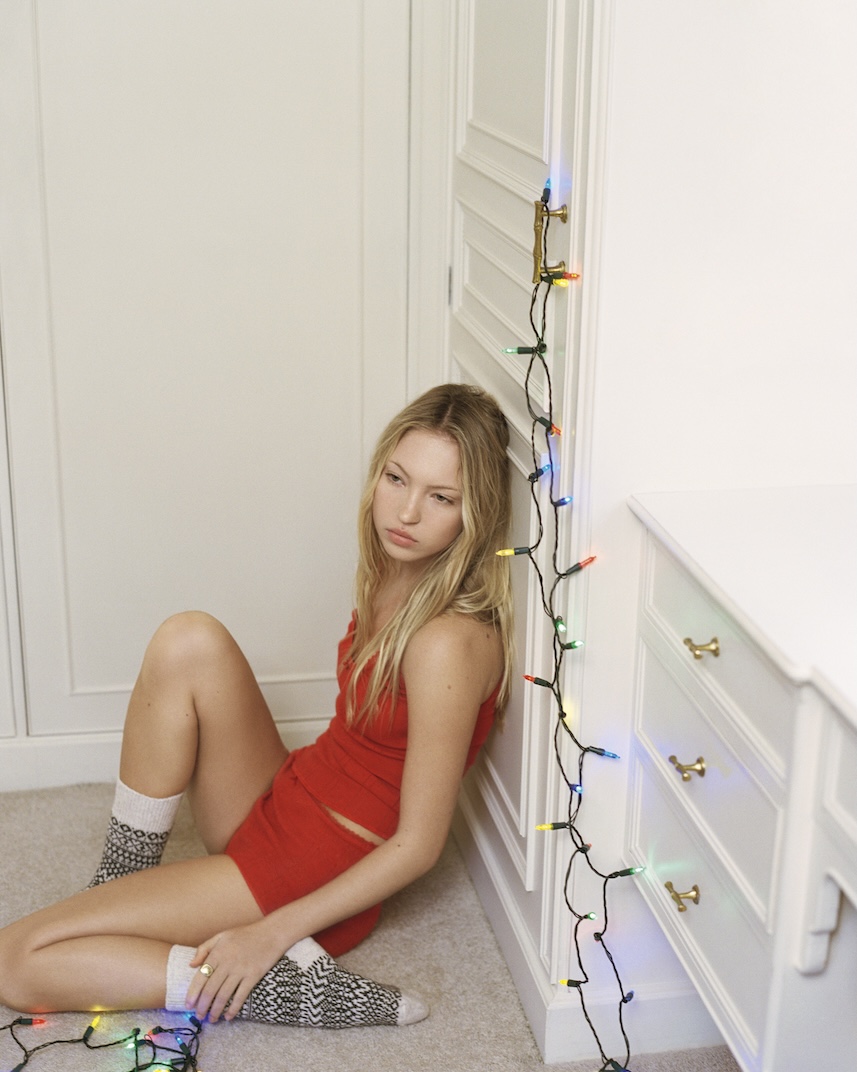
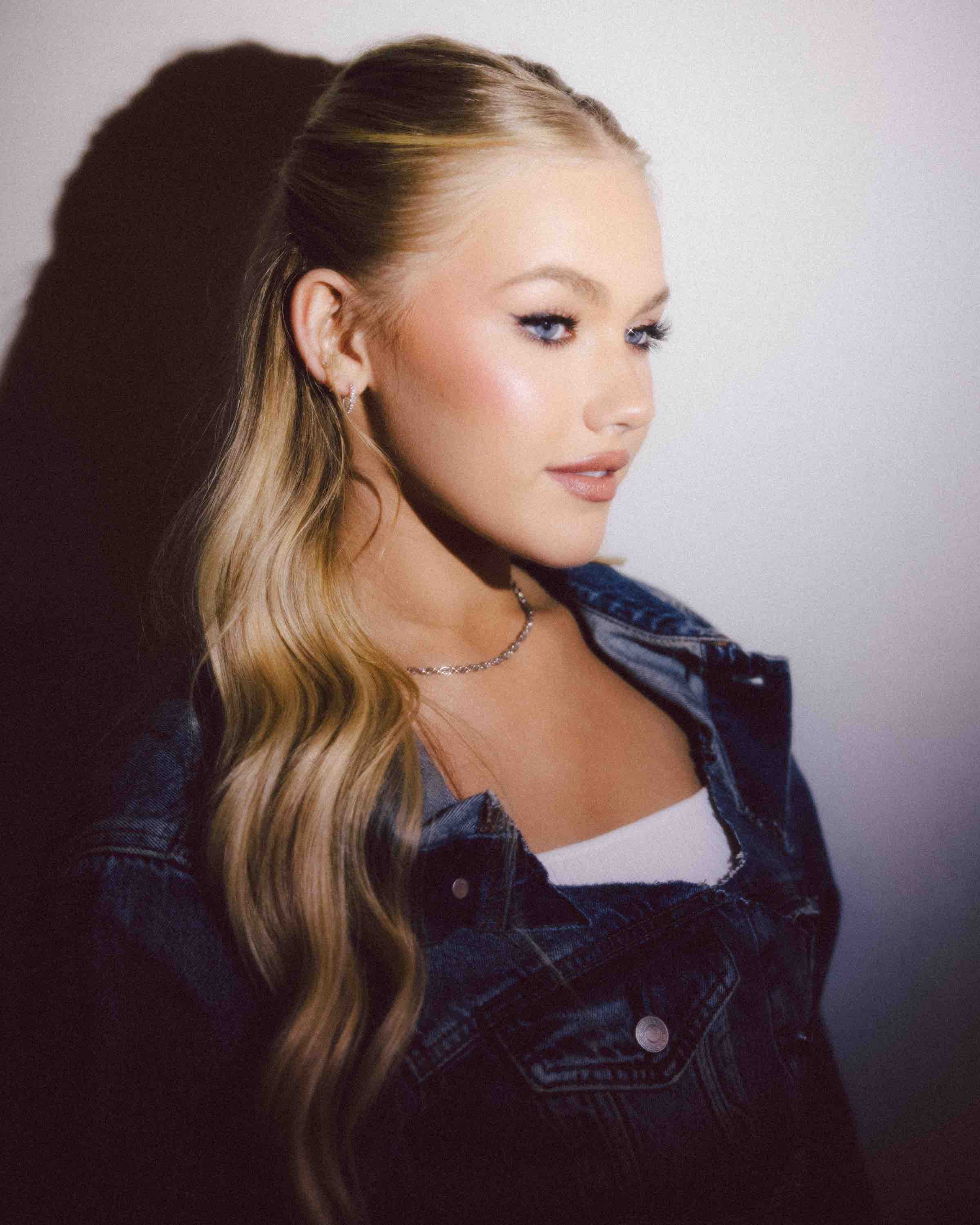
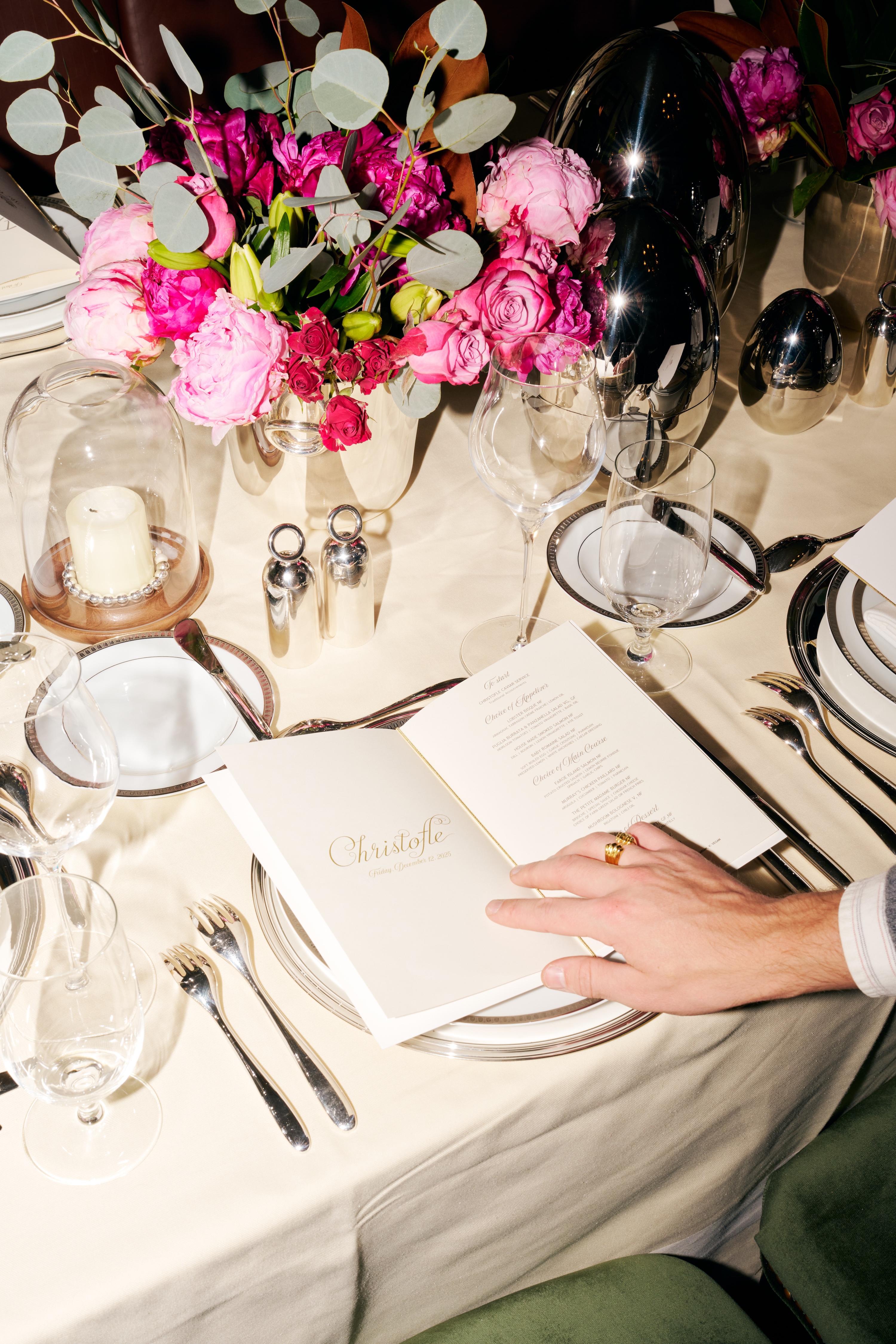

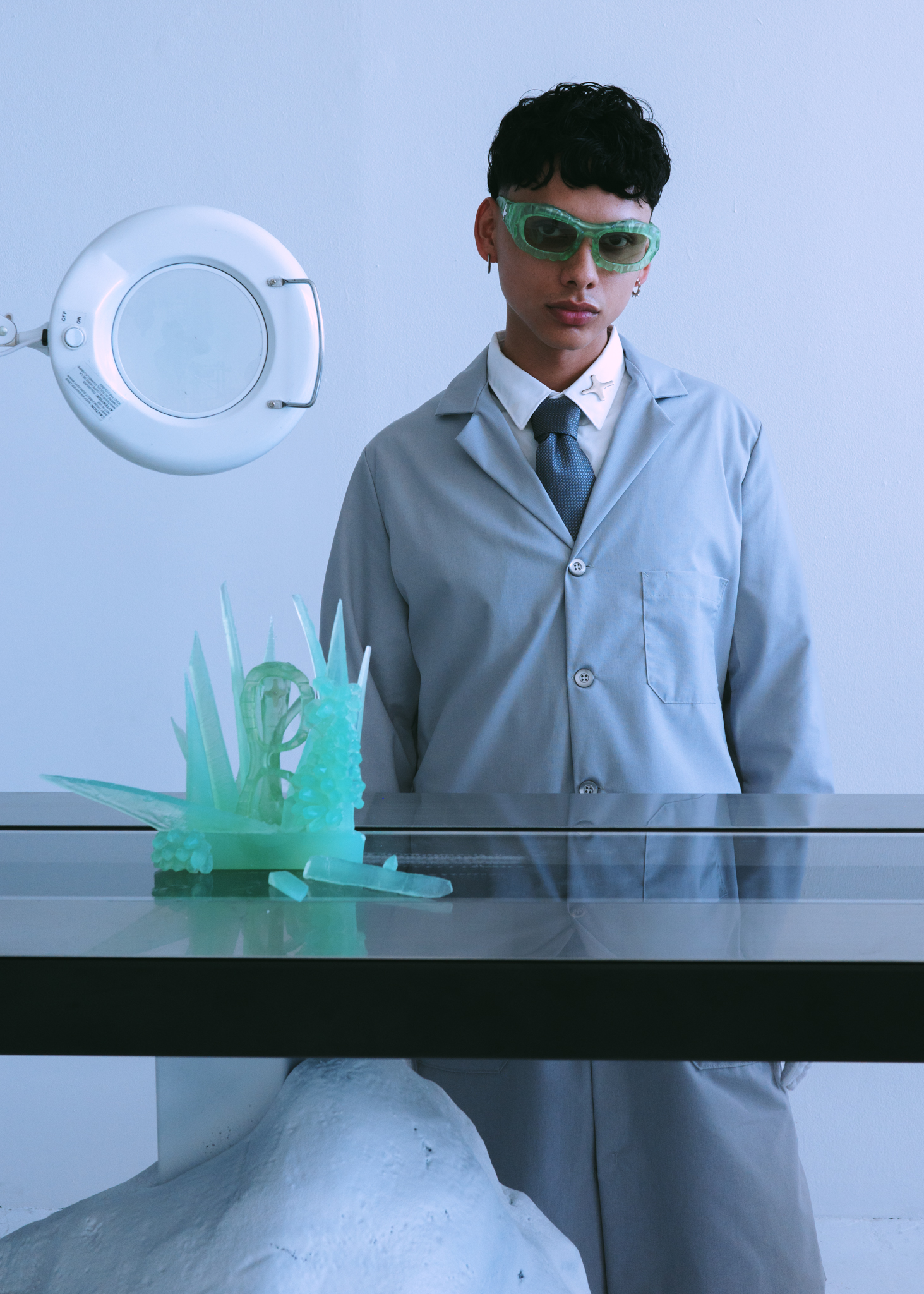
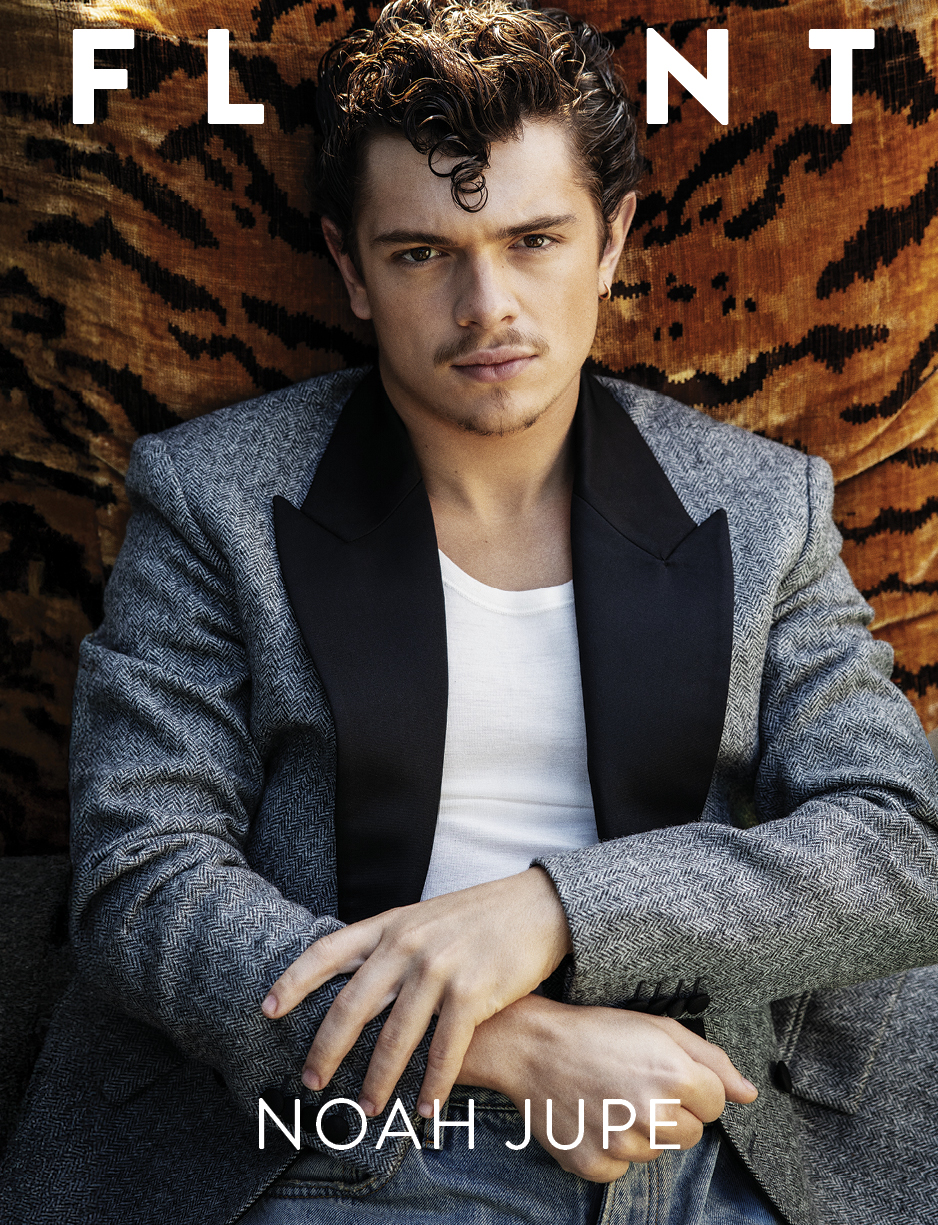
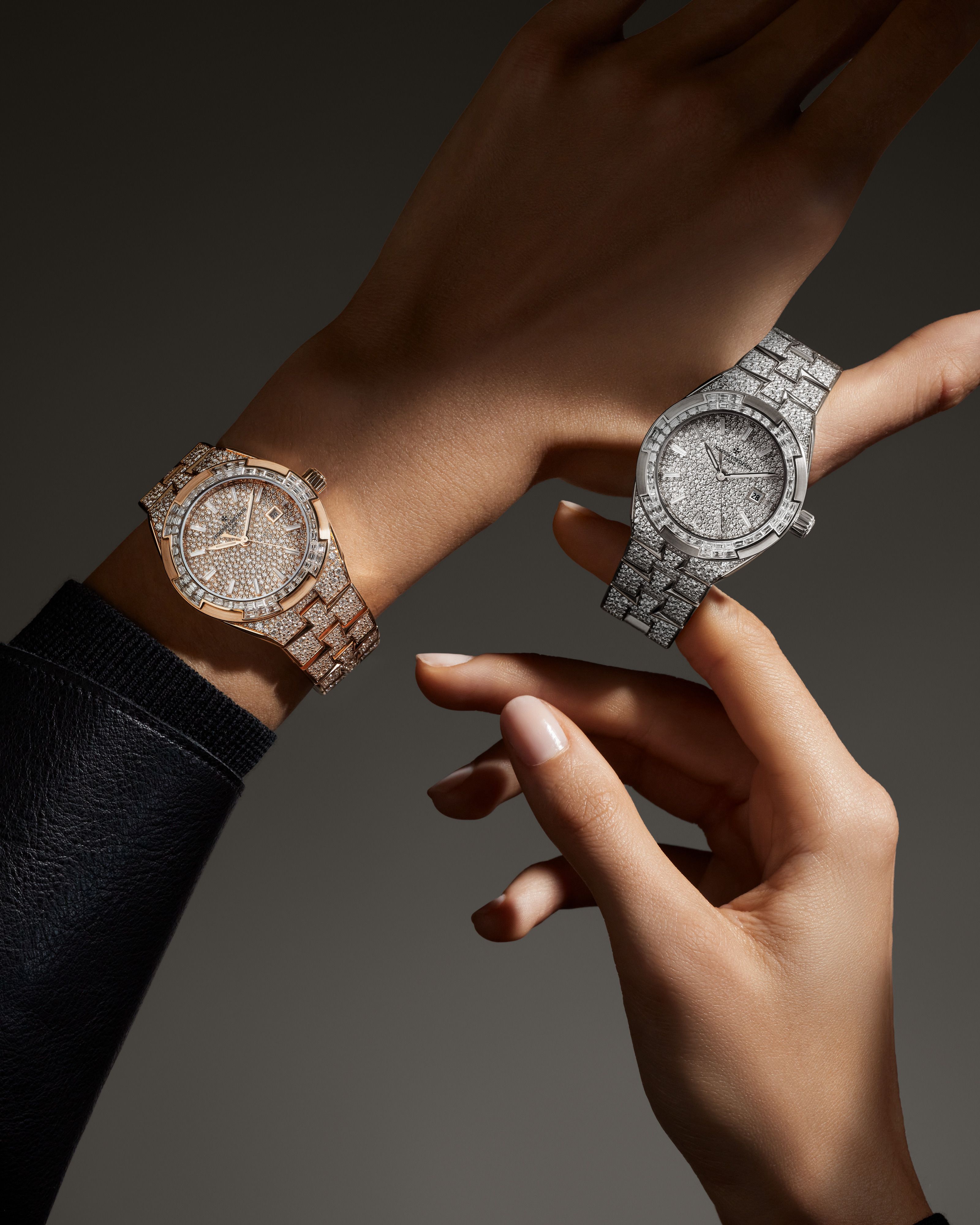

.JPG)
.jpg)
